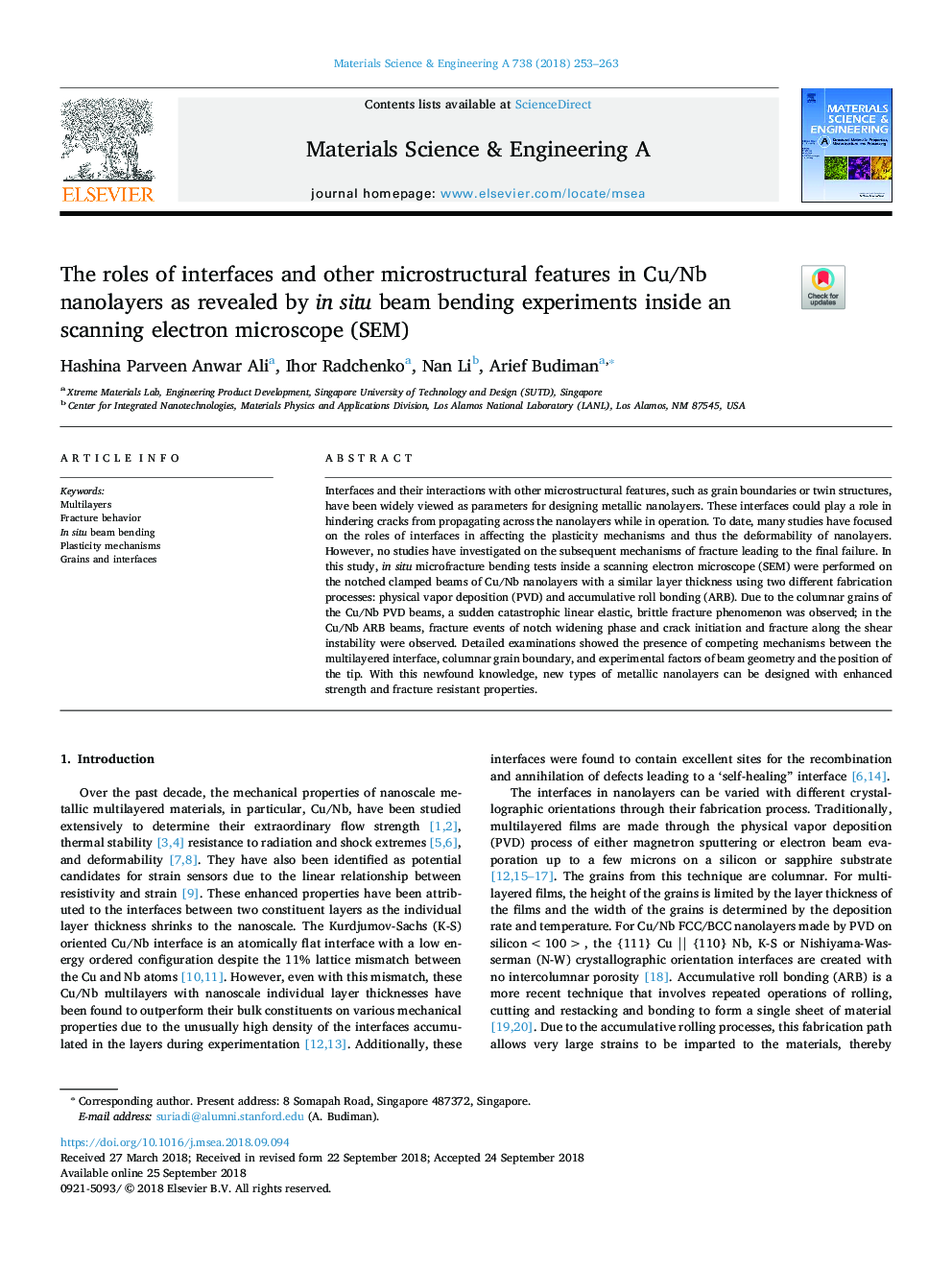| Article ID | Journal | Published Year | Pages | File Type |
|---|---|---|---|---|
| 11001651 | Materials Science and Engineering: A | 2018 | 11 Pages |
Abstract
Interfaces and their interactions with other microstructural features, such as grain boundaries or twin structures, have been widely viewed as parameters for designing metallic nanolayers. These interfaces could play a role in hindering cracks from propagating across the nanolayers while in operation. To date, many studies have focused on the roles of interfaces in affecting the plasticity mechanisms and thus the deformability of nanolayers. However, no studies have investigated on the subsequent mechanisms of fracture leading to the final failure. In this study, in situ microfracture bending tests inside a scanning electron microscope (SEM) were performed on the notched clamped beams of Cu/Nb nanolayers with a similar layer thickness using two different fabrication processes: physical vapor deposition (PVD) and accumulative roll bonding (ARB). Due to the columnar grains of the Cu/Nb PVD beams, a sudden catastrophic linear elastic, brittle fracture phenomenon was observed; in the Cu/Nb ARB beams, fracture events of notch widening phase and crack initiation and fracture along the shear instability were observed. Detailed examinations showed the presence of competing mechanisms between the multilayered interface, columnar grain boundary, and experimental factors of beam geometry and the position of the tip. With this newfound knowledge, new types of metallic nanolayers can be designed with enhanced strength and fracture resistant properties.
Related Topics
Physical Sciences and Engineering
Materials Science
Materials Science (General)
Authors
Hashina Parveen Anwar Ali, Ihor Radchenko, Nan Li, Arief Budiman,
